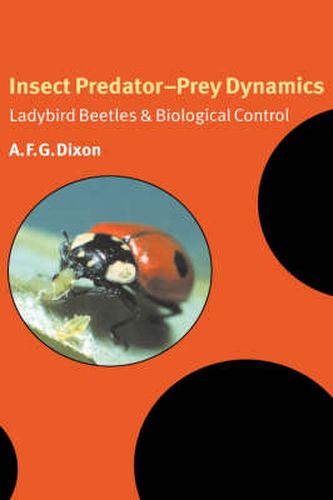Readings Newsletter
Become a Readings Member to make your shopping experience even easier.
Sign in or sign up for free!
You’re not far away from qualifying for FREE standard shipping within Australia
You’ve qualified for FREE standard shipping within Australia
The cart is loading…






Ladybird beetles are typical predators that feed on a wide range of insect prey, and have been used extensively in the biocontrol of insect pests. This volume explores basic ladybird biology, in particular, their close association with prey and its effect on their rate of development and body size. The author uses optimal foraging theory, field observations, and laboratory experiments to illustrate how ladybird larvae maximize their rate of energy intake, and ladybird adults their fitness. The interdependence of these life history parameters is then used to develop a simple predator-prey model that, combined with an analysis of the literature, highlights the specific attributes of potentially successful biocontrol agents for all those interested in predator-prey dynamics.
$9.00 standard shipping within Australia
FREE standard shipping within Australia for orders over $100.00
Express & International shipping calculated at checkout
Ladybird beetles are typical predators that feed on a wide range of insect prey, and have been used extensively in the biocontrol of insect pests. This volume explores basic ladybird biology, in particular, their close association with prey and its effect on their rate of development and body size. The author uses optimal foraging theory, field observations, and laboratory experiments to illustrate how ladybird larvae maximize their rate of energy intake, and ladybird adults their fitness. The interdependence of these life history parameters is then used to develop a simple predator-prey model that, combined with an analysis of the literature, highlights the specific attributes of potentially successful biocontrol agents for all those interested in predator-prey dynamics.